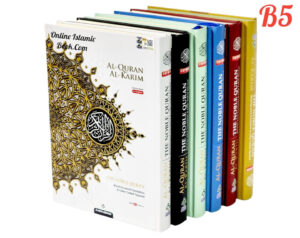
Bird enthusiasts are always on the lookout for lively and colorful avian companions. Two popular choices that stand out in terms of personality, color, and charm are the Cheeked Conure and Caique Bird. Both species are known for their affectionate nature, striking appearance, and playful behavior, making them ideal pets for bird lovers. This article will explore the key traits, care requirements, and ownership considerations for both the Cheeked Conure and Caique Bird, offering insights to help potential bird owners make an informed choice.
The Cheeked Conure: Overview and Characteristics
The Cheeked Conure belongs to the parrot family and is native to South America. These small to medium-sized parrots are known for their friendly nature and vibrant plumage. There are different types of cheeked conures, with the Green-Cheeked Conure being the most popular.
Physical Appearance
Cheeked Conures, particularly the Green-Cheeked variety, are about 10 inches long, making them relatively small compared to other parrots. Their most distinctive feature is their green cheek feathers, which contrast beautifully with their vibrant body colors. Their plumage is a mix of green, blue, yellow, and red, with the tail and belly often displaying red or maroon hues.
Personality and Behavior
Cheeked Conures are known for their playful and affectionate nature. They are social birds that enjoy human interaction, making them great companions for individuals who spend a lot of time at home. These birds are intelligent and curious, which means they require mental stimulation to stay happy and healthy.
Conures are also known to be excellent mimics, although their speech capabilities are not as advanced as larger parrots. They love to learn tricks and can become quite the entertainers when given the chance. However, they can be noisy at times, especially if they feel neglected or bored.
Habitat in the Wild
In the wild, cheeked conures are found in the forests and savannahs of South America, including regions of Brazil, Bolivia, and Argentina. They live in flocks and rely on the dense canopy of trees for protection and food. Their natural diet consists of fruits, seeds, and vegetables.
Caring for a Cheeked Conure
Owning a cheeked conure is a rewarding experience, but it comes with responsibilities. Providing proper care is crucial for the bird’s well-being.
Cage Requirements
A cheeked conure needs a spacious cage to accommodate its active nature. A cage measuring at least 24 x 24 x 24 inches is recommended, with horizontal bars for climbing. The cage should be equipped with toys, perches, and swings to keep the bird entertained.
Diet and Nutrition
A balanced diet for a cheeked conure includes high-quality pellets, seeds, fresh fruits, and vegetables. Pellets should form the majority of their diet, as they provide essential nutrients. Fruits and vegetables such as apples, berries, carrots, and leafy greens are excellent choices for supplementing their meals. It is important to avoid feeding them avocado, chocolate, caffeine, and alcohol, as these can be toxic to birds.
Social Interaction and Enrichment
Cheeked conures thrive on social interaction. Daily playtime and bonding with their human companions are crucial to their emotional well-being. Providing plenty of toys, puzzles, and opportunities for mental stimulation will help prevent boredom and destructive behavior. Regularly rotating toys and teaching new tricks can keep them engaged.
Grooming and Health
Regular grooming is essential for a cheeked conure. This includes nail trimming, beak care, and providing access to water for baths. Additionally, scheduling annual check-ups with an avian vet is important to ensure they remain healthy.
Caique Bird: Overview and Characteristics
The Caique bird is another popular choice among parrot enthusiasts, known for its bold personality and striking appearance. Caiques are native to the Amazon Basin in South America and are known as “the clowns of the parrot world” due to their playful and mischievous nature.
Physical Appearance
Caiques are medium-sized parrots, measuring around 9 to 10 inches in length. There are two main species: the Black-Headed Caique and the White-Bellied Caique. The Black-Headed Caique has a striking black head with green wings and orange-yellow legs, while the White-Bellied Caique features a white belly, green wings, and a yellow-orange head. Both species are known for their vibrant plumage and striking color combinations.
Personality and Behavior
Caiques are full of energy and known for their playful antics. They are highly social birds that enjoy interacting with their owners and other birds. Caiques have a reputation for being curious and fearless, often engaging in acrobatic displays and playful behavior.
One of the unique traits of Caiques is their hopping behavior, which adds to their charm. Unlike other parrots, they tend to hop instead of walk when moving around. This playful quirk, along with their strong-willed nature, makes them a fun addition to any home.
Caiques are also known to be independent and can sometimes display stubborn behavior. They require firm, consistent training to ensure good behavior. Though not strong talkers, Caiques can learn a few words and mimic sounds.
Habitat in the Wild
Caiques are native to the tropical rainforests of South America, particularly in regions like Brazil, Peru, and Colombia. In the wild, they live in small flocks and are known for their foraging behavior, feeding on fruits, seeds, and insects.
Caring for a Caique Bird
Caiques are energetic birds that require active care and attention. Ensuring their physical and mental well-being is key to maintaining a happy and healthy bird.
Cage Requirements
Caiques need a large cage to accommodate their high energy levels. A cage measuring at least 24 x 24 x 36 inches is recommended, with plenty of room for toys, perches, and climbing structures. Caiques love to explore, so having a variety of activities in their cage is important.
Diet and Nutrition
A well-balanced diet for a Caique includes pellets, seeds, fruits, and vegetables. Pellets should make up the majority of their diet, while fresh fruits and vegetables like bananas, oranges, broccoli, and spinach can be given as treats. Like cheeked conures, Caiques should avoid foods that are toxic to birds, such as avocado and chocolate.
Social Interaction and Enrichment
Caiques thrive on interaction and stimulation. They are highly intelligent birds that need mental and physical challenges to stay engaged. Providing a variety of toys, including foraging puzzles, ropes, and bells, will keep them entertained.
Daily playtime outside the cage is also essential for a Caique. These birds are known for their love of physical activity, and regular exercise helps maintain their health and well-being. Caiques also enjoy bathing, so providing a shallow dish of water or a bird-safe spray can help them stay clean.
Grooming and Health
Caiques require regular grooming, including nail trimming and beak care. They also enjoy bathing, so providing opportunities for them to bathe is important. Additionally, regular vet check-ups are necessary to monitor their health and address any potential issues.
Cheeked Conure vs. Caique Bird: Which Is the Right Pet for You?
When deciding between a cheeked conure and a Caique bird, it’s important to consider your lifestyle, experience with birds, and the level of care you can provide.
Temperament and Personality
Both the cheeked conure and Caique are known for their playful and affectionate personalities, but there are key differences. Cheeked conures tend to be more laid-back and easy-going, making them a good choice for first-time bird owners. They are social and enjoy human interaction, but they are less demanding than Caiques.
On the other hand, Caiques are known for their high energy and mischievous behavior. They require more attention and interaction than conures and can sometimes be stubborn. Caiques are better suited for experienced bird owners who can handle their strong-willed personalities.
Noise Level
Cheeked conures can be noisy at times, especially when they feel neglected or bored. However, their noise level is generally manageable compared to larger parrots. Caiques, on the other hand, are known to be relatively quiet birds. They are more likely to make playful sounds and chirps rather than loud squawks.
Space and Exercise
Both species need a spacious cage and plenty of room to play and explore. However, Caiques are more active and require more space for physical activity. If you have limited space or time to dedicate to a bird’s exercise needs, a cheeked conure might be a better fit.
Lifespan and Commitment
Both cheeked conures and Caiques have long lifespans, often living up to 20-30 years in captivity. Owning either of these birds is a long-term commitment, so it’s important to be prepared for the responsibility of caring for them throughout their lifetime.
Conclusion
Cheeked conures and Caique birds are both fantastic pets for bird enthusiasts, offering unique personalities, striking appearances, and the potential for a deep bond with their owners. While the cheeked conure is a more relaxed and manageable bird, the Caique offers a higher level of energy and entertainment. Deciding between these two species ultimately comes down to personal preference, experience, and the time you can dedicate to their care.
With proper care, attention, and love, both the cheeked conure and Caique can become cherished companions, bringing joy and color into your home for many years.



